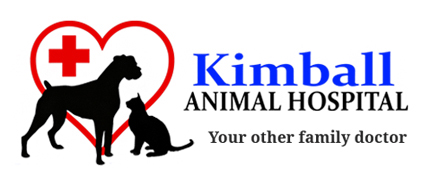February is here, and that means its National Pet Dental Health Month; but dental hygiene for your pet should be a task that you do every day, all year long. There are some estimates that nearly 80% of our dogs and cats have some form of dental disease. Many owners might not know all the specific signs of dental problems, but, they might know that something’s gone wrong. Halitosis, bad breath, is no help to a happy home. It’s also the number one most popular complaint that we receive at the hospital, when it comes to your pet’s mouth. There are of course many other signs, such as: tartar, gum recession, gum redness or bleeding, and even as far as lost teeth.
Dental care should definitely be of higher concern when we think about our pet’s health. With bad teeth, and resulting periodontal disease, the entire body can be affected. Mouth infections can spread to the heart, liver, kidney, and gastrointestinal systems. Long term problems can also reduce a pet’s immune system, making them more prone to other types of infections.
Regular dental care can reduce or eliminate oral disease, and keep your pet’s breath fresh, teeth clean and reduce, eliminate or even prevent gum disease. The 3 main ways to control plaque, tartar, and dental calculi formation are with: abrasion (brushing and scraping), weakening tartar structure, or eliminate the bacterial source.
Daily teeth-brushing is the most effective treatment. Using pet-friendly toothpaste and toothbrushes are the way to go; as human products are not meant to be swallowed, so should not be used. When brushing is not possible, other options are available.
There are many safe dental chews or toys that help with providing abrasion and massaging the gums. Dental treats can be similar as chewable, but often have additives that affect tartar formation or even kill bacteria. Dental sprays or drinking water additives can help
Dry kibble as the main component of a pet’s diet is more helpful than canned food 9which can still be offered, if separately from the dry), because there is more scraping of the teeth. Even something as simple as facial fur trimming can help those bearded fellows, as fur around the mouth can accumulate and harbor bacteria.
Of course, despite doing all of these things, tartar will still rear its ugly head. After all, humans still get their teeth cleaned regularly. So eventually, your pet will need a full dental cleaning underneath anesthesia.
We have a handout full of information about how we do a dental cleaning available at the hospital. Ask for one any time.
So don’t forget about your pet’s teeth, we want them having healthy smiles all year long. For this reason, in the future we will be extending our February dental discount year round and you can receive the same savings if you schedule your pet’s dental cleaning within 30 days of an examination where a dental cleaning is recommended. That way, there is no longer any reason to wait on something that could make your pet feel better today!
